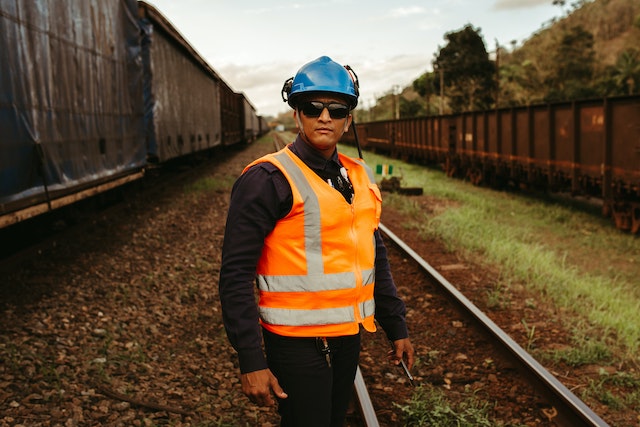

The brakeman and conductor positions refer to a period in the railroad industry in which train operations required four-person crews. In recent history, a brakeman is typically a conductor trainee, who is responsible for the train cars attached to the locomotive. Like most railroad workers, brakeman and conductor injuries are commonplace, primarily due to constant exposure to various hazardous chemicals in the conductor work environment.
Railroad brakemen and conductors also are prone to injuries from the coupling and uncoupling of rail cars, particularly when they stand outside to direct engineers. They also can suffer side effects from exposure to silica, diesel exhaust, and asbestos, all of which can lead to severe medical complications and diseases like cancer of many types. A diligent railroad injury lawyer may be able to assist railroad brakemen and conductors who have sustained injuries in the course of their employment.
When brakemen or conductors sustain injuries while working in the railroad industry, they cannot look to their state workers’ compensation systems for relief. Railroad workers may only seek compensation for work-related illness and injury under the Federal Employers’ Liability Act (FELA), which offers various benefits for eligible workers. However, the most significant difference between FELA and workers’ compensation, is that injured parties do not qualify for benefits unless they can prove that the negligence of their employers led to their injuries.
To maintain a FELA claim, injured parties must provide clear evidence that the negligence of their employers directly caused their injuries in the conductor work environment, which is not always an easy task. Injured railroad brakemen have based FELA claims on various negligent actions by their employers, including their failure to:
If injured brakemen can prove negligence on behalf of their employers, they may be entitled to benefits under FELA. These benefits can include costs of past and future medical treatment, current, and future wage losses, physical pain and suffering, and mental distress. Enlisting the help of a personal injury lawyer can be instrumental to the ability to recover damages for injuries to brakemen under FELA.
Like many railroad workers, brakemen and conductors often suffer catastrophic injuries due to their proximity to operating locomotives and train cars. Brakemen and conductors often must stand outside to direct the movement of engineers forward and backward as they couple and uncouple railroad cars. This task necessarily places them dangerous near braking mechanisms, which can result in accidents causing severe injuries.
Other brakeman and conductor railroad injuries may stem from exposure to hazardous chemicals. Silica, diesel exhaust, and asbestos all can result in significant injuries to brakemen, conductors, and other railroad workers. For instance, locomotives and train cars are equipped with locomotive sanders, which spread sand on the rails to aid in braking, especially on steep declines. The silica in the sand is a source of constant exposure to railroad workers, which can result in silicosis and other breathing problems for brakemen and conductors.
Likewise, railroad brakemen and conductors frequently are exposed to asbestos from a variety of sources, including asbestos-wrapped pipes and other lines going through the cabs of locomotives and deteriorating insulation in railroad buildings. Frequent asbestos exposure can lead to asbestosis, mesothelioma, lung cancer and other lung diseases and cancers. Diesel exhaust exposure from being in and around locomotives also can lead to severe illnesses and diseases, including lung cancer and cancer of other types.
After a serious injury or illness stemming from their work environment, injured railroad brakemen and conductors may be faced with piles of medical bills, lost wages, and lengthy periods of rehabilitation. In some cases, these individuals may never be able to return to work. By seeking compensation for brakeman and conductor injuries with the help of an experienced railroad injury lawyer, you may be able to obtain the financial support that you need and deserve in this situation.
The railroad industry presents many hazards for brakemen, conductors and other workers due to chemical substance exposure and accidents inherent in working in and around locomotives. FELA requires railroad employers to protect their workers by maintaining reasonably safe working environments and conditions. When railroad companies fail to live up to their duties, they can be liable for the resulting injuries to railroad brakemen, conductors and other workers. Contact us today to learn more about how a railroad injury lawyer could help your case.



© 2025
Doran & Murphy, PLLC
All rights reserved | Attorney Advertising